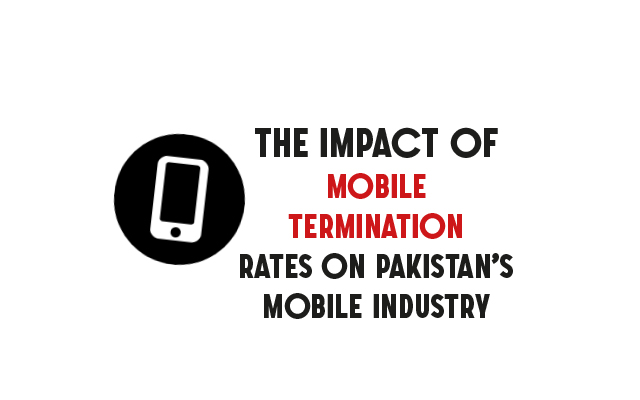The Impact of Mobile Termination Rates on Pakistan’s Mobile Industry

Mobile communications market has been growing at an impressive pace worldwide. The mobile subscription in Pakistan also increased from 99 million in 2009-10 to 152 million in October 2018. Competition in the industry has intensified with the introduction of 3G and 4G services. MNOs and regulators around the world have dealt extensively with many issues related to mobile telephony. Today, regulators are especially concerned about inter‐network (termination) charges for calls to mobile networks and, starting in the early 2000s, have repeatedly intervened over the years to cut these charges with the aim to improve competition and reduce prices to final consumers. This article will focus on the Mobile Termination Rates in Pakistan and also enlists the benefits of reduction in MTR.
Mobile Termination Rates in Pakistan
Mobile termination rate means “Mobile operators charge other operators for connecting calls to their network. Both mobile-to-mobile (M2M) and fixed-to-mobile (F2M) calls incur MTRs.” Mobile termination is also known as off-net call charges incurred by mobile operators. Due to these charges, millions of cellular users are forced to pay high mobile termination rates in Pakistan.
History of MTR in Pakistan:
On 1st December 2000, PTA had determined MTR of Rs. 2.20/min for off-net calls. After two years, this rate was revised and cut down to Rs. 2.00/min in 2002. In the year 2005, Pakistan Telecommunication Authority again calculated fixed-to-mobile and mobile-to-mobile interconnection charges. As a result, the MTR was further decreased to Rs. 1.60 per min which was effective from August 2005. Off-net call charges were further reduced to 1.25/min in year June 2006.
Keeping in mind the concerns of people for high MTR, with the help of renowned consultancy firm, PTA determined interconnection charges on the basis of Bottom-up Long Run Incremental Cost (LRIC) and Top Down Fully Allocated Cost (FAC). This study resulted in a further reduction of MTR to Rs. 1.10/min, which was effective from June 2008. MTR kept on reducing every year, till January 2010, when it was Rs. 0.90/min. After this, for the period of eight years, interconnect usage price remained stagnant. Just recently Mobile Termination Rates were further reduced to Rs 0.80 per minute. From January 2020, the off-net call charges of all the operators in Pakistan will be further reduced to Rs0.70 per minute. This rate is fixed by PTA in collaboration with all the operators of Pakistan. Though telecom operators were not happy with the decision and asked for the revision of MTR however, according to telecommunication policy mobile termination rates cannot be revised twice in a year.
Benefits of Reduction in MTR:
With the increase in mobile penetration nowadays, the Mobile-to-Mobile traffic is far greater than fixed line-to-Mobile volume, therefore, operators should now be less worried about possible cuts in their revenues and other short-run consequences. Rather, the further decrease in MRT will decrease the price of calls to mobile phones, which will benefit consumers. Many researches also suggest that these cuts in no way have weakened the mobile operators’ position to survive or to compete by making new investments.
Besides, the regulator is of the view that the current Mobile termination rates are 200 percent higher than the other regional countries. The reduction in MTR will help operators in the long run as it will decrease grey traffic since illegal means of calling will automatically reduce. Industry experts also believe that Pakistan’s MTR should be between Rs0.30 to Rs0.40 per minute once purchasing power parity is adjusted. According to experts, Pakistan’s mobile termination rate is highest in South East Asia, as mobile termination rates in India are 0.21, Bangladesh’s 0.22 and Sri Lanka’s 0.32.
The basic purpose of reducing mobile termination rate is to benefit the end consumers. It benefits customers in two ways; firstly, due to Lower termination rates, cost of landline companies passing calls to mobiles is also reduced. In this way, consumers are benefitted by paying low charges. Due to this, all the bigger and older operators will be forced to improve their service quality to retain the customer base instead of using the advantage of their existing market share to rake in higher charges.
Secondly, lower termination rates encourage competition in the mobile market. In this way, the customer has a vast choice to choose any mobile network operator. In order to maintain user base, operators will have to bring more pricing flexibility and will be able to increase the variety of packages available to consumers. In addition to providing benefits to the consumers, reduction in MTR will also set grounds for a new entrant. Regulators should reduce MTRs in these circumstances, particularly if they are concerned about a lack of progress by new entrants and where there is a limited fixed-line network (and therefore less reason for MNOs to choose high MTRs in order to exploit their monopoly fixed to mobile calls), as is the case in many developing countries including Pakistan.
International Telecommunication Union (ITU) has ranked Pakistan the fourth country in the world where the average monthly cost of running a mobile phone is quite reasonable when compared to rest of the world, regardless of being the eighth highest taxation telecom sector in the world. With further facilitation provided to the consumer, Pakistan will be in a better position to become a digital nation. The operators need to expand their horizon and introduce new and innovative services to improve their revenues rather than following the old pattern of irrationally charging customers for basic services.
PTA Taxes Portal
Find PTA Taxes on All Phones on a Single Page using the PhoneWorld PTA Taxes Portal
Explore NowFollow us on Google News!





